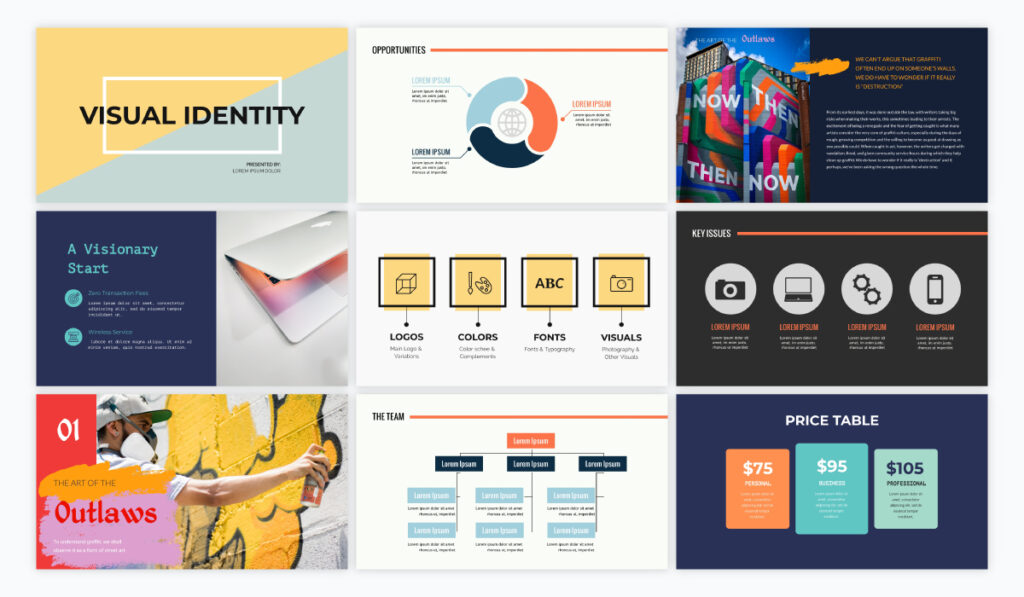Public speaking, as well as presenting, is an art. And as in traditional arts, you can be so naturally ready to deliver, you can start from basic and learn how to master the subject, or maybe both. Although I like the idea to have attendees listening to you, not being distracted by the light of a projector, I also know sometimes it’s worth showing slides while presenting. The following are notes from my years of on-field experience, plus an idea, a proposal, I’m keen to share and further discuss with you, readers of this blog.

As said, I personally know many confident people who prefer to present without using slides, and I know people who use well shaped slides adhering to the most famous principles promoted by guru like Steve Jobs or Guy Kawasaki; I also know, though, people who jump on stage only to loud-read tons of information projected in their full-of-text slides, no pics and font size eleven.
Now, I like the above gurus when they suggest to minimise, simplify: one information per slide is enough, the 10/20/30 rule of Mr Kawasaki, which means 10 slides, 20 minutes, font 30, more visuals and less text to capture people attention (it’s our body, our brain that works that way), etcetera, etcetera.

But, let me go a little bit further.
In software architecture, nowadays more then before, it’s quite common to talk about software as a service app (see the twelve-factor app) and microservice architecture. In a nutshell, the ability to build applications made of many, small and independent services: micro, in the sense of specialized, non necessarily size; decoupled, meaning that communication between services (service bus) is used to compose the application logic; versioned, since application updates can happen at single service level.
Back to slides and presentations now.
Just imagine how effective it could be, at the end, building your slide deck as you build applications. Thus:
- each slide as one [micro]service: one simple, specialised, self-contained slide, which could be used alone to give the audience one message
- decoupled slides, in a sense that every slide -representing one message- could be shown in random order while preserving the consistency of your story
- versioned slides, meaning that every message in every single slide can always be updated, improved, without breaking your build (ehm, story)
Not easy, you’d say. I don’t think so, I’d answer. As always, you need to try, test, improve and retry to get the best results.

For example, my first try was to give a speech to a small number of people, not all “friendly”, using a 8 slides technical deck, raw, built with the above technique. Before starting, I proposed the attendees to listen to my ten minutes presentation twice, letting them choosing in both cases the order of my slides: 6,4,1,8,… the first time, 1,8,3,4… the second one.
First try, guess what, good try. I’ll do practice more, I’m sure it’ll get better and better.
Give it a try: no more first and last slide, no more agenda, no more “unuseful” ones. Just get straight to the point, place one message on one slide each, shuffle them, connect the dots… et voilà!
Waiting for you to invite me to your next presentation, then!
ps:
You may want to use the following resources:
